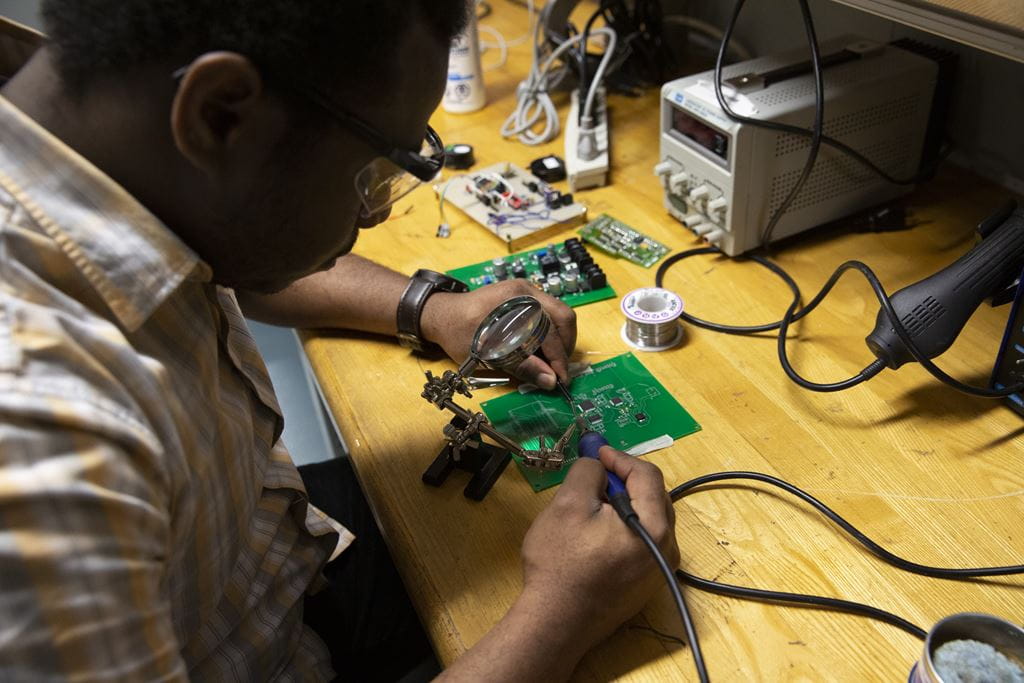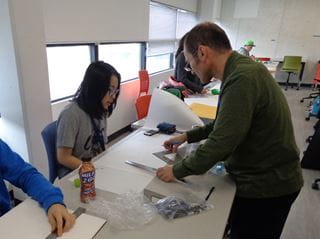
Researcher Spotlight: Dr. Joaquin Moran
Dr. Joaquin Moran is a Professor of Mechanical Engineering in the Faculty of Applied Science and Technology. He is a familiar face in Sheridan’s Centre for Advanced Manufacturing and Design Technologies (CAMDT) and is a strong supporter of faculty mentorship with students interested in undertaking research. He is currently involved in a FedDev Ontario - Southern Ontario Network for Advanced Manufacturing Innovation (SONAMI) funded research project with Stern Laboratories, which looks at the heat dissipation in nuclear reactors, with the goal of developing safer and energy-efficient reactors.
Here, Dr. Moran delves into his research and broader interests.
 Can you tell us about the research you’re currently working on and what industries or communities you hope it will benefit?
Can you tell us about the research you’re currently working on and what industries or communities you hope it will benefit?
Dr. Moran: This is our second SONAMI collaboration with Stern Laboratories, a global engineering consultant for the nuclear industry. Our current project focuses on using Computational Fluid Dynamics (CFD) and High-Performance Computing (HPC) to study the mechanisms of heat dissipation in CANDU (Canada Deuterium Uranium) reactor fuel-bundles. This is accomplished by simulating a variety of operational conditions that include aging components, to improve the reliability and safe operation of nuclear plants. As new regulations and guidelines are developed to reduce our impact on the environment, development of our clean energy resources has become a priority in the power generation sector. Why is further research into sustainability and renewable energy systems so important?
Dr. Moran: It is undeniable that our presence in the world has an influence on the environment. As the world becomes more electrified, we need to think about the best ways to keep up with this demand. However, the path to a more robust system based on renewable energy requires both technological and financial innovation strategies. Investment in research on wind, solar, nuclear and energy storage technologies is essential to reach our goals in the short term and sustain our progress in electrification. How do student roles fit into your research and how does it impact your work?
Dr. Moran: Students at Sheridan have enormous potential to contribute to these technologies through their design and implementation expertise. Most of the digital 3D models generated for our simulations were developed by Sheridan students. In other projects we have developed at CAMDT, students have provided the design and manufacturing skills required to fabricate complete prototypes. At the end of our current project, we expect to have a 3D printing component that was spearheaded by our students.
Some of your research interests pertain to machine learning and artificial intelligence applied to energy systems – how do you see AI affecting the future of energy and climate change?
Dr. Moran: Artificial intelligence and machine learning, two subsets of data science, have demonstrated extreme flexibility in terms of potential applications. As we generate more data, it becomes more important to use it effectively, and this is where computers can help.
Machine learning algorithms can be trained to find patterns within the data to predict the outcome of complex problems, like climate change and energy systems. These are influenced by several parameters, and machine learning can help us find the relationship between them and the relative importance of each one with respect to a desired outcome. Some obvious applications in the energy sector include the evaluation of energy management measures or the prediction of electricity cost. There is also potential for machine learning to increase our understanding of physical systems, a domain where only analytical or numerical solutions have been implemented.
Prior to joining Sheridan in 2015, Dr. Moran worked as a Senior Consulting Engineer at Hatch Ltd. His industrial experience revolves around energy projects and encompasses wind, solar, hydroelectric and thermal systems, as well as energy management. In both industrial and research environments, he has had experience in flow-induced vibrations, Computational Fluid Dynamics (CFD), oil and gas applications, modelling of sound generation and propagation, and aerodynamics. Dr. Moran was responsible for developing the Hybrid Power business initiative within Hatch, which entails the integration of renewable power options into remote mining and industrial projects.
Media Contact
For media inquiries, contact Sheridan’s Communications and Public Relations team.




